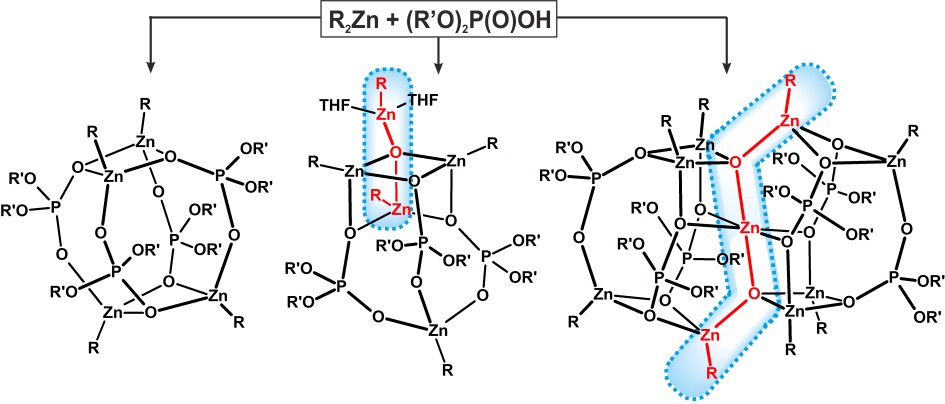Alkylzinc diorganophosphates: synthesis, structural diversity and unique ability to incorporate zincoxane units
Małgorzata Wolska-Pietkiewicz,a* Adam Świerkosz,a* Iwona Justyniak,b Agnieszka Grala,b Kamil Sokołowski,b Janusz Lewiński,ab
a Faculty of Chemistry, Warsaw University of Technology, Noakowskiego 3, 00-664 Warsaw, Poland
b Institute of Physical Chemistry, Polish Academy of Sciences, Kasprzaka 44/52, 01-224 Warsaw, Poland
DOI: 10.1039/c6dt03324e
First published online 24 Aug 2016.
Cover of Chem. Commun.
Paper on the publisher's website.

Equimolar reactions between ZntBu2 and diphenyl phosphate (dpphe-H) or dimethyl phosphate (dmphe-H) result in the formation of [tBuZn(O2P(OR’)2)]-type compoundswhich crystallize as tetranuclear aggregates, [tBuZn(dpphe)]4 (14) or [tBuZn(dmphe)]4 (24), with the phosphate ligands spanning 4‑coordinate Zn centers. The utility of ZnMe2instead of ZntBu2 dramatically changes the reaction outcome and leads to [MeZn(O2P(OR’)2)]-type moieties incorporating zincoxane units, i.e., pentanuclear [{MeZn(dpphe)}3(Me2Zn2O)(THF)2
